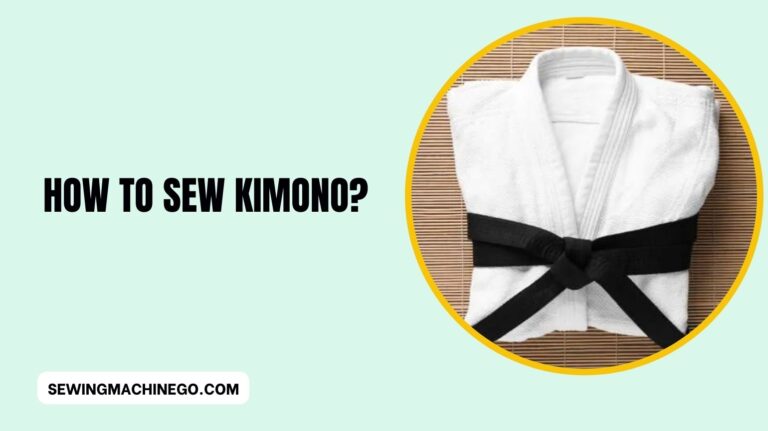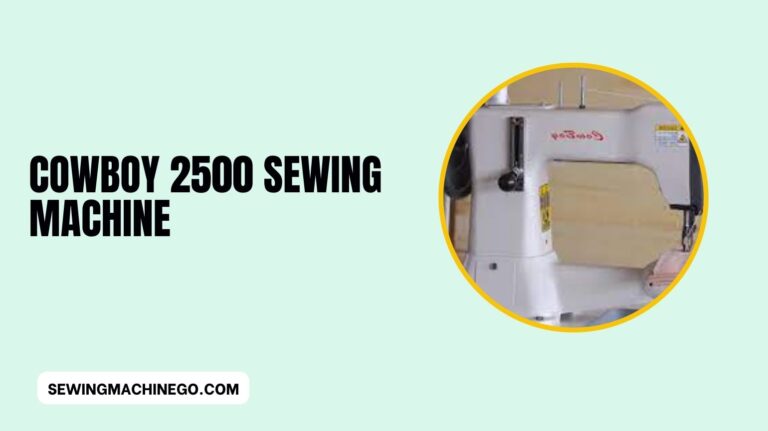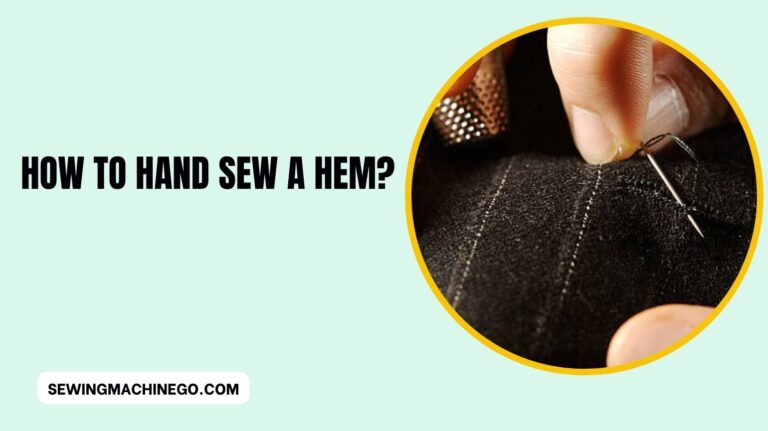How to Sewing by Hand? (Basic Steps Guide) of 2023
Hand sewing is an age-old craft that has been practiced for centuries, and it continues to be a valuable skill in today’s world. How to Sewing by Hand?
Whether you want to mend your favorite clothes, create beautiful hand-stitched crafts, or explore the art of hand embroidery, knowing how to sew by hand is a practical and rewarding skill.
In this article, we will guide you through the process of hand sewing, from selecting the right tools to mastering essential stitches and even repairing your clothing.

Introduction to Hand Sewing
Hand sewing is the art of joining fabrics and materials together using a needle and thread. It predates the invention of sewing machines and has been a fundamental skill for generations.
Learning how to sew by hand opens the door to countless possibilities, from fashion design and home decor to crafting and repairs.
The Art of Hand Sewing
Hand sewing is a versatile and creative activity that allows you to create, repair, and embellish various fabric items.
Unlike machine sewing, it offers a personal touch and a deep connection to your projects. Whether you are a beginner or an experienced crafter, mastering hand-sewing techniques can be a fulfilling and enjoyable endeavor.
Choosing the Right Tools
Before you start your hand sewing journey, it’s essential to gather the necessary tools. These include:
- Needles of various sizes
- A variety of threads in different colors
- Small scissors
- Thimble
- Pins
- Measuring tape
- Fabric marker or chalk Having the right tools will make your hand sewing projects much more manageable and enjoyable.
Preparing Your Materials
Select your fabric and thread based on your project’s requirements. For beginners, it’s advisable to start with medium-weight cotton fabric and a matching thread.
Pre-wash and iron your fabric to ensure it’s clean and wrinkle-free, which will make your sewing experience more comfortable.
Threading the Needle
Threading a needle can be tricky, but with a little practice, you’ll get the hang of it. Cut a small, angled piece of thread, moisten the tip, and gently guide it through the eye of the needle.
Pull the thread through, leaving a small tail, and tie a knot at the end. You’re now ready to start sewing.
Basic Hand Sewing Stitches
There are several basic hand-sewing stitches you should familiarize yourself with:
Running Stitch
The running stitch is one of the simplest and most versatile hand stitches. It’s perfect for basic sewing and gathers.
Backstitch
The backstitch is a strong, secure stitch used for seams and repairs. It’s great for attaching buttons and mending tears.
Whipstitch
The whipstitch is excellent for sewing seams in felt and other fabrics. It creates a neat, flat finish.
Blanket Stitch
The blanket stitch is commonly used for edging and finishing raw fabric edges, making it perfect for projects like blankets and scarves.
Securing Knots and Starting Stitches
To begin sewing, anchor your thread by making a small knot at the end. Insert the needle from the wrong side of the fabric to the right side, and you’re ready to start stitching.
Sewing Techniques and Tips
Practice makes perfect, and hand sewing is no exception. Experiment with different stitches, thread tensions, and fabric types to develop your skills. Keep your stitches even, and be patient with yourself as you improve your technique.
Repairing Clothing by Hand
Hand sewing is a valuable skill for repairing clothing. Whether it’s a loose button, a small tear, or a ripped seam, knowing how to mend these issues can extend the life of your garments and save you money on professional alterations.
Hand Sewing for Craft Projects
Beyond clothing repairs, hand sewing can be applied to various craft projects. From making soft toys to creating decorative pillows and quilts, hand sewing allows you to add a personal touch to your creations.
Hand Embroidery
If you’re looking for a creative outlet, hand embroidery is a beautiful form of art. You can embellish clothing, create wall art, or personalize gifts with intricate embroidery patterns.
Caring for Hand-Sewn Items
To ensure your hand-sewn items last, always follow proper care instructions. Delicate hand-sewn fabrics may require gentle hand washing or spot cleaning. Store your creations in a cool, dry place to prevent damage.
People also ask
How do I start sewing by hand?
To start sewing by hand, you’ll need a few basic supplies: needles, thread, scissors, and fabric. Follow these steps:
Thread your needle by cutting a small, angled piece of thread, moistening the tip, and guiding it through the needle’s eye.
Secure a knot at the end of the thread.
Position your fabric and insert the needle from the wrong side to the right side.
Start stitching using a basic hand-sewing stitch like a running stitch or backstitch.
Practice on scrap fabric to improve your skills.hand-sewing
Can you hand sew instead of using a machine?
Yes, you can hand sew instead of using a sewing machine.
Hand sewing is a traditional and versatile method that allows for precise stitching and is ideal for various sewing projects, repairs, and creative crafts.
What is the easiest hand-sewing stitch?
The running stitch is one of the easiest hand-sewing stitches.
It involves passing the needle and thread in and out of the fabric in a straight line, making it simple and versatile for beginners.
How do you start sewing for beginners?
Starting sewing as a beginner involves these key steps:
Gather basic supplies: Needles, thread, fabric, scissors, and pins.
Learn to thread a needle and tie a knot at the end of the thread.
Practice simple stitches like the running stitch or backstitch on scrap fabric.
Gradually progress to sewing basic projects, like a pillowcase or small pouch, to build your skills.
Seek tutorials and guidance to advance your sewing abilities.
Conclusion – How to Sewing by Hand?
In conclusion, learning how to sew by hand is a rewarding skill that opens the door to a world of creativity and practicality.
From basic stitches to intricate hand embroidery, there’s no limit to what you can achieve with a needle and thread. So, pick up your tools, start practicing, and enjoy the art of hand sewing.

Hi, I am Alice, and I am your perfect guide to the world of sewing machines. With over 10 years of experience in the sewing industry, I am passionate about sharing my knowledge and expertise to help you make the most of your sewing journey. about me






